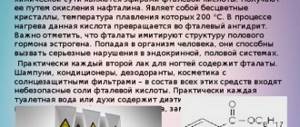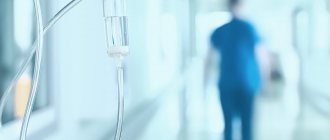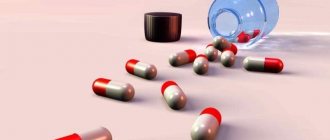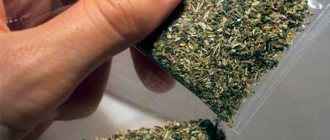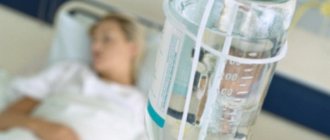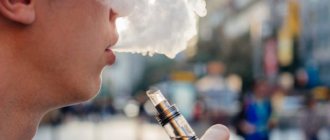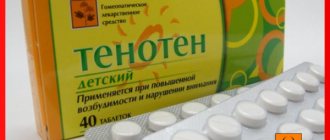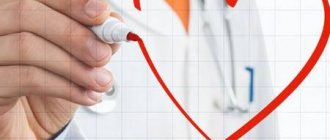Dioxin
In the modern world, people often prefer not to notice dangers in the environment, believing that the most harmful things are poor nutrition, psychological stress and hard work. Not many people know about the harmful content of their favorite and irreplaceable products, the water and air around us. For example, not everyone has heard about dioxins and their effect on the human body. Nevertheless, these are poisons that can not only harm a person once, but also accumulate in the body for further attacks.
How dangerous are dioxins and which organs of the human body do they primarily affect? Let's find out about the consequences of their entry into the body and help with poisoning.
Processes contributing to the appearance of dioxins
As already mentioned, most of them appear due to industrial processes. However, dioxins can also be formed during natural reactions, and their effect on the human body is just as destructive as that of their synthetically created “brothers.” For example, forest fires or volcanic eruptions can contribute to the appearance of these toxins.
However, industry still bears the main responsibility for dioxin pollution. The main “suppliers” of these poisons are:
- factories where processes of melting and bleaching cellulose using chlorine take place;
- enterprises producing certain types of herbicides, pesticides,
- uncontrolled incinerators that do not completely burn waste.
Although the formation of TCDD derivatives is local, they spread easily, and today there is practically no corner of the planet where there is not at least some percentage of dioxins. Their highest concentrations are usually found in sediments, soils, food products, especially milk and its derivatives, fish, shellfish, and meat. The content of these toxins is relatively low in air, water, and plants.
There are many stocks of used industrial oils around the world that are based on polychlorinated biphenyls (PCBs), many of which contain polychlorinated dibenzofurans (PCDFs), derivatives of TCDD. When they are stored for too long and/or disposed of improperly, this leads to the release of dioxins, which pollute water, food, and air.
It must be said that complete recycling of PCDF is a labor-intensive and complex process. These substances must be treated as hazardous waste. The best option for their disposal is incineration in specially designated installations.
Cases of dioxin pollution in world history
Many countries monitor the amount of such a substance dangerous to human health as dioxin in food products. Instructions for the use of measures to control poisoning by this poison contribute to the early detection of contamination, often this helps prevent large-scale consequences. One such striking example is the discovery in 2004 of high concentrations of harmful compounds in dairy products in the Netherlands. After an investigation, the source of the contamination was identified. It turned out to be clay, which is widely used in the manufacture of animal feed. A similar case was registered in 2006, all in the same Netherlands. But then another source of infection was identified - fat, also included in the feed.
Dioxin is not just included in the list of toxic substances found in food products. He ranks first in it. In world history, there are also more large-scale cases of detection of this poison. For example, Ireland removed tons of pork from sale at the end of 2008. After samples were taken for testing, it turned out that the amount of dioxin in the meat exceeded the safe level by 200 times. This, of course, led to the country being forced to withdraw all pork products from sale. After conducting a study, experts found that hazardous products did not have time to reach customers’ tables, and the source of contamination was food. But meanwhile, this made us think about measures to prevent this from happening in the future.
Today, such a threat as dioxin cannot be ignored. The application of international standards to food products is a mandatory point in trade relations. For example, the European Commission issued a health warning to its countries in 2007 after a food additive known as guar gum, which was widely used as a thickening agent for meat products and desserts, was found to contain high levels of dioxin. It was established that the source of contamination was low-quality Indian resin.
Almost every year, there are reports from different countries about the detection of excessive concentrations of dioxin compounds in meat, dairy products, desserts, fish and even seafood delicacies. Most of these signals come from industrialized countries. This is explained by the fact that these countries have developed instructions for testing products for quality. Constant monitoring is also carried out.
Difference between dioxin and dioxidin
Dioxidin is a synthetic antimicrobial drug (AMP) with a wide spectrum of action. It was approved for use in the countries of the former USSR in 1976.
Only a doctor can prescribe dioxidin due to its specific toxicological properties. The basis for this is the patient’s vital signs.
Dioxidine is used to treat anaerobic infections caused by multidrug-resistant strains. This medicine has shown its effectiveness in the fight against severe purulent infections; it is used both locally and endobronchially (a solution is injected through a catheter into the bronchial cavity).
This medicine contains dioxin. For this reason, dioxidin is a dangerous xenobiotic that is used only in the treatment of severe forms:
- purulent and inflammatory processes,
- infections of the skin, bones, joints,
- CNS infections.
Dioxidin is used exclusively in hospital settings in combination with other drugs. It acts as a backup option when other AMPs have failed in the fight against infections of the skin, respiratory system, and others. Dioxidin is also prescribed for allergies to other medications in this group.
If the dose is calculated incorrectly, dioxidine will cause poisoning - this is the main reason why you cannot use this drug yourself. This medicine destroys the membrane structures of bacteria, thereby preventing them from multiplying. This is the effectiveness of dioxidin, but the danger from its use is also quite high.
How does dioxin affect the human body?
When the concentration of dioxins in the human body is small, their effect on health is minimal and they do not cause any changes. However, there is a threshold dose, above which various pathological processes begin to develop in the digestive and respiratory organs and on the skin. Due to the cumulative properties of TCDD derivatives, they can cause very serious consequences.
It has been established that the lethal dose for humans is 6-10 g per kilogram of weight. And in smaller quantities, this poison, foreign to the body, causes poisoning, for which specific concentrations have not been established. Intoxication will happen in any case, it’s just that the clinical manifestations may differ.
The effect of PCDF poisoning in humans occurs at different times and not all of the symptoms that we list below occur. It all starts with damage to enzyme systems, and can end with the development of various mutations. Dioxins also enhance the effect of other toxins on the body, if any are present in it. If other carcinogens have penetrated into the internal organs and systems, there is a high probability that they will react with dioxins and cause cancer.
PCDF enhances the effect of:
- mercury,
- lead salts,
- cadmium,
- nitrates,
- sulfides,
- chlorophenols,
- radiation.
What causes the destructive effect of dioxins?
- they lower immunity because they inhibit the process of cell division,
- promote the proliferation of cancer cells,
- disrupt the functioning of receptors that are responsible for the functioning and interconnection of organs.
If we summarize all of the above, the effect of dioxins on the human body comes down to the following:
- suppression of the immune system by inhibiting the functioning of the organs responsible for this function (hematopoiesis, thymus),
- the poison has a teratogenic effect, that is, it disrupts the intrauterine development of the fetus,
- inhibits reproductive function, causing infertility or provoking mutations in the next generation,
- in young people (girls and boys), dioxin slows down the process of puberty,
- slows down metabolism
- inhibits the functioning of the endocrine glands, disrupting the balanced functioning of the body,
- provokes cancer.
All these are long-term consequences when a person, unwittingly and without suspecting it, takes dioxin in certain doses for years. Acute poisoning with this toxin looks different.
Structure[edit]
File:TCDD structure2.png Structure of the dioxin molecule 2,3.7,8-tetrachlorodibenzo-para-dioxin
The dioxin molecule is a system of two benzene rings connected to each other in two places by oxygen atoms (O). It is called dioxin. and to be more precise, the dibenzo-para-dioxin system is the basis of numerous compounds. constituting a whole class of dioxins. The atoms in dioxin are numbered and this makes it possible to accurately convey the structure of dioxin compounds in their names. Carbon atoms in positions 1,2,3,4 and 6,7,8,9 each have one hydrogen atom, but instead of them there may be other atoms, for example, chlorine
Based on the structure of the molecule, 75 different chlorinated dioxins are possible.
The most toxic among them is dioxin, which contains four chlorine atoms in positions 2,3,7,8. Its full name is 2,3.7,8-tetrachlorodibenzo-p-dioxin, or 2,3,7,8-TCDD for short. It was identified by K. Schultz as a chloracnogenic factor and synthesized by J. Dietrich.
Halogenated dibenzofurans, xanthenes, biphenylenes, biphenyls, naphthalenes, etc. are classified as compounds related to dioxins.
How does poisoning manifest itself?
If acute dioxin poisoning occurs, the effects of intoxication are very pronounced. When the maximum permissible concentration of poison has penetrated the body, a lethal lesion develops, which is determined by the following symptoms:
- physical exhaustion,
- anorexia,
- general oppression
- adynamia,
- eosinopenia (decreased concentration of eosinophils in the blood),
- lymphopenia (decreased lymphocytes in the blood),
- leukocytosis (increased concentration of white blood cells),
- neutrophilosis (increase in neutrophilic granulocytes in the blood).
Then the symptoms move to various organs:
- pancytopenic syndrome (devastation of peripheral blood and bone marrow at the cellular level),
- liver damage,
- destruction of immunocompetent systems and tissues.
Externally, poisoning manifests itself as:
- subcutaneous swelling,
- shortness of breath, a feeling of heaviness due to the accumulation of fluid in the pericardium, chest and abdominal cavities.
First the eyes swell, then the neck, face, and torso. Sometimes there is swelling of the lung tissue, but this is quite rare.
Non-fatal poisoning does not manifest itself so acutely, since it is a long process of accumulation of poison in the body - from several months to ten years. The basis of the symptoms is a violation of metabolic processes, due to which the following are observed:
- changes in the liver epithelium,
- degeneration of the epithelium of the stomach, intestines,
- loss of appetite,
- loss of up to a third of body weight,
- dehydration of the body,
- hair loss, eyelashes,
- the appearance of chloracne - an acne-like skin lesion.
If treatment is not started in time, toxins will begin to destroy lymphoid tissue, thereby impairing the functioning of the nervous system and endocrine glands.
How to help someone affected by dioxins
The insidiousness of dioxins is that even an experienced doctor is not immediately able to determine that the patient’s health problems are precisely because of these toxins. If there was no mass poisoning, for example, from an explosion at a chemical plant, it is almost impossible to establish that a person suffered from TCDD derivatives.
If intoxication of this kind is suspected, first aid to the patient consists of general techniques:
- provide him with access to fresh air,
- flush the stomach
- give sorbent,
- provide plenty of fluids,
- urgently take him to the hospital.
At the hospital, resuscitators and toxicologists will prescribe the necessary tests and appropriate treatment. Therapy is aimed at removing as many poisons as possible from the body and stopping the symptoms of poisoning caused by them - stabilizing the functioning of organs and systems. For this purpose, in particular, huge doses of plasma-substituting solutions are prescribed.
Poisonous potent substances
In addition to dioxin, today there is a whole list of potent and toxic substances. These dangerous compounds are used in industry and agriculture. During emergency releases, water, soil, air, and plants are contaminated. Toxic substances can accumulate in the body of animals and humans. They provoke various diseases, including cancer. The higher the concentration of dangerous chemical compounds, the stronger the damage to tissues and organ systems, and the situation is complicated by the fact that these substances are very difficult and even almost impossible to remove from the body. They remain in it for years.
Potently toxic substances are chemical compounds that are highly toxic. They are capable under certain conditions, for example during industrial accidents at chemical plants, to pollute vast areas. This is dangerous because such a situation entails mass poisoning of people. In addition, environmental contamination occurs. Today, the group of toxic chemicals, in addition to dioxin, which alters the metabolism, includes chlorine, phosgene, phosphorus trichloride, carbon monoxide, chloropicrin, hydrocyanic acid, sulfur chloride, acrylonitrile, sulfur dioxide, carbon disulfide, ammonia, dimethyl sulfate, ethylene oxide, methyl bromide.
How to prevent dioxin poisoning
This will be especially difficult for those who live in dangerous areas - near the industries mentioned at the beginning of the article. However, there are things they and others can do to prevent harmful chemicals from building up in the body so quickly that they can be eliminated. To do this you need:
- refuse fish caught in water bodies near which chemical plants are located,
- refuse game caught in the same places,
- do not eat uncertified products, be especially careful at market stalls,
- install good filters on the tap that remove chlorine compounds from the water,
- Do not burn chemical industry products and polyethylene products on fires.
Your only defense is correct behavior. Because it is impossible to detect dioxins in the environment due to the peculiarities of their chemical properties. But it is still difficult to determine their presence in products due to the fact that not every city in our country has a laboratory equipped with everything necessary for this.
- Author: Elena
Rate this article:
- 5
- 4
- 3
- 2
- 1
(0 votes, average: 0 out of 5)
Share with your friends!
Notes
Alkenes and alkynes Vinyl chloride • Vinylidene chloride • Trichlorethylene • Tetrachlorethylene • Allyl chloride • Chloroacetylene • Dichloroacetylene • Chloroprene Alcohols, ketones, aldehydes Ethylene chlorohydrin • Chloral • Chloral hydrate • Hexachloroacetone • Epichlorohydrin Acids and anhydrides Monochloroacetic acid • Dichloroacetic acid • Trichloroacetic acid • Acetyl chloride • Carboxylic acid chlorides Aromatic compounds Benzyl chloride • Chlorobenzene • Polychlorinated biphenyls • Hexachlorobenzene • Chloroacetophenone • Benzoyl chloride • Benzotrichloride • DDT (insecticide) • Dioxins Organoelement compounds (,,,) Chloropicrin • Mustard gas • Chlorophos • Lewisite High molecular weight compounds Polyvinyl chloride • Polyvinylidene chloride • Chloroprene rubber

